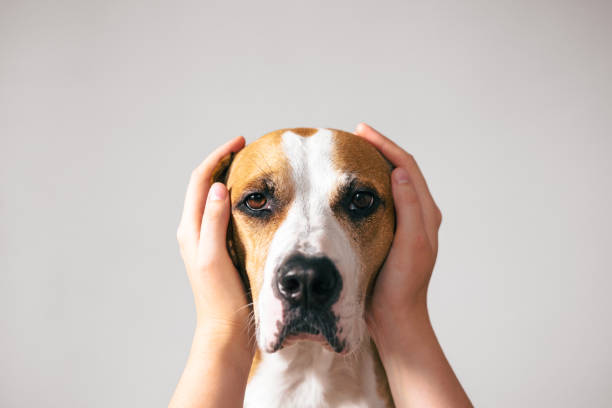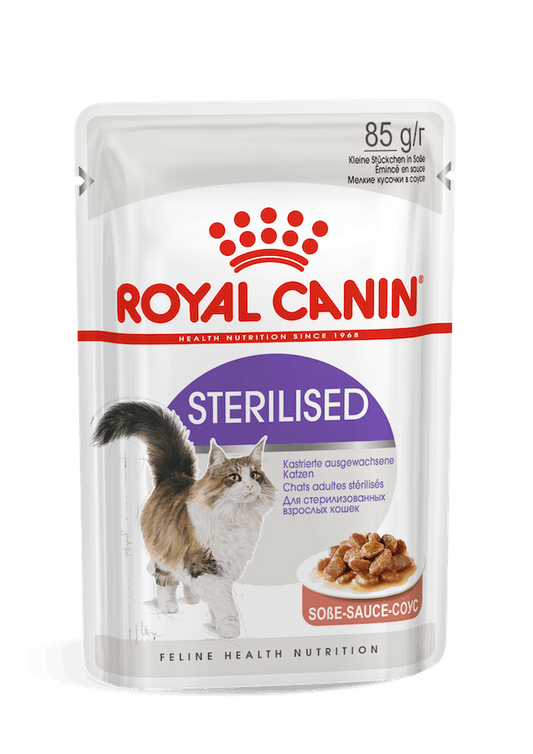Stress is a commonly used word that describes feelings of strain or pressure. The causes of stress vary hugely from person to person: work, meeting new people, or disruption in daily routine are all possibilities. To reduce stress levels, people may alter their behaviour to find comfort. Perhaps seeking out a trusted friend, undertaking routine chores such as housecleaning, or sport and exercise can all make us feel better.
Our pets can become stressed, too; it has been found that our pets’ stress levels roughly mirror our own. Changes in the household, a new baby or pet, moving home, changes in routine, an aging brain- memory problems or dementia, chronic pain or separation from family are all possible causes or stress. Cats in particularly can be very sensitive to stressors.

Signs of Stress
How can we tell if they are stressed? The signs of anxiety in animals can be subtle and highly variable. It is important to know your pet’s normal demeanour, then you can more easily recognise any changes.
Whining or barking
Vocalization is normal canine and feline self-expression, but it may be intensified under duress. It can either be to gain your attention or to self-soothe.
Neediness
Animals may seek out your attention more than normal when stressed, showing an increased dependency on you.
Changes in bodily functions
Stressed cats frequently urinate inappropriately around the house, this may be part of a wider syndrome termed feline lower urinary tract disease (FLUTD), for which stress is a major trigger. Nervous dogs can feel a sudden urge to pee or poop. When your dog urinates shortly after meetinga new canine friend, he may be marking territory and reacting to the strain simultaneously.
Appetite
Loss of appetite and weight are also indicators of chronic stress.
Avoidance or displacement behaviour
When faced with an unwelcome situation, dogs may “escape” by focusing on something else. They may sniff the ground, lick their genitals, or simply turn away. Ignoring someone may not be polite but it is better than aggression, so if your dog avoids interaction with other dogs or people, do not force the issue.
Hiding or escape behaviour
An extension of avoidance, some tense dogs literally move behind their owners to hide. They may even nudge their owners to prompt them to move along. Cats will simply hide as their way of avoidance.
Pacing or shaking
Dogs and cats, like people, also pace when agitated. They can often pace a repeated path or route.
Yawning, drooling and licking
Dogs yawn when they are tired or bored, but also when stressed. A stressful yawn is more prolonged and intense than a sleepy yawn. Dogs and cats may also drool and lick themselves excessively when nervous, which may result in saliva staining, hair loss, sore patches or lesions particularly in cats.
Panting
Dogs and cats can both pant when stressed. This is commonly seen in the veterinary clinic.
Changes in eyes and ears
Acutely stressed animals can have dilated pupils and blink rapidly. Dogs may open their eyes really wide and show more sclera (white) than usual, giving them a startled appearance. Ears that are usually relaxed or alert can be pinned or rotated back against their head.
Changes in body posture
Dogs normally bear even weight on all four legs, shifting weight onto the hind legs or cowering can be a sign of a stressful situation. When scared, dogs may also tuck their tails or become quite rigid. Cats will generally crouch more when stressed, often with a fixed gaze on the floor.

Shedding
Shedding increases when an animal is anxious or stressed. This is particularly noticeable in anxious show dogs in the ring often “blow their coat”, or when in the veterinary clinic. This is less noticeable in outside settings, such as visiting a new dog park.
Managing Stress
It is fairly safe to assume that if we are feeling stressed or anxious, then our pets will be also. 2020 has been a difficult year for all of us and with all the challenges we have been dealing with, it may be easy to forget our pets will be finding things tough too. Whilst some sense of normality is beginning to be restored to us- returning to offices and workplaces and children returning to school, these changes can actually be a source of stress to our pets. Whilst we cannot avoid these stressors, we can take steps not to compound their effects on our pets.
Environment and people
Pets find changes to their environment and family group a source of stress. Now is not the time to rearrange furniture, have the decorators in or the landscapers to redo the garden. Similarly, do not think a new pet to keep your existing dog or cat company is a good idea. It is good to provide your pet with a safe place in the home where he can escape anxious situations, be that a crate or basket. Whilst it might be tempting to invite a stream of friends and family to the home after the isolation of lockdown, this will be a source of anxiety for pets.
Routine
Changing your routine can be cause anxiety in pets, try and maintain a routine as much as possible if your pet is showing signs of stress.
Pheromones and anxiolytics
Dog Appeasing Pheromone (DAP) and Feline Facial Pheromone (FFP) have long been used to relieve anxiety in cats and dogs. Both are available in plug in diffusers and sprays (Beaphar CatComfort and CaniComfort). Another adjunct or alternative is Pet Remedy, a valerian-based plug in or spray that produces intense relaxation in animals.
Exercise
As with humans, exercise can be a great stress reducer with the natural endorphins it releases. Physical activities like walking or playing help both you and your pet release tension. Do not forget cats enjoy play also!
Cat specific measures
Cats need more than one litter tray in the household- one per cat and one extra is the general rule of thumb. Litter trays should be of adequate size and positioned in quiet places throughout the home, away from feeding and drinking stations.
Conclusion
Stress is an unavoidable part of modern life, and some times are more testing than others. If your pet is particularly prone to stress, the best plan is to try and anticipate stressors and avoid them as much as possible- decorators, landscapers and other non-essential visitors should be deferred. In situations where stress is unavoidable, takes measures such as soothing Pet Remedy, CaniComfort or CatComfort diffusers; ensure cats have adequate resources. It is always worth remembering, if you are feeling stressed or anxious it is likely your pets will be also.






